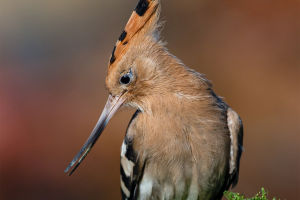Among the various fascinating features of the animal kingdom, the pupils of a goat stand out as particularly intriguing.
Unlike the round pupils of humans or the vertical slits seen in cats, goats have horizontal, rectangular pupils that remain essentially parallel to the ground.
This distinctive trait is not just a curious quirk of evolution but serves a crucial functional purpose.
This essay delves into the reasons why goats have horizontally aligned pupils and explores how this adaptation benefits them in their natural habitats.
The Mechanics of Goat Vision
The primary function of any animal's pupils is to regulate the amount of light entering the eye, thereby aiding in vision. The shape and orientation of pupils can significantly influence an animal's field of view and depth perception.
In the case of goats, their horizontal pupils are an evolutionary adaptation that enhances their survival.
Wide Field of View
One of the most significant advantages of horizontal pupils is the expansive field of view they provide. Goats, being prey animals, need to be constantly vigilant of their surroundings to detect potential predators.
Horizontal pupils allow goats to have a panoramic vision that spans almost 320 to 340 degrees. This wide field of view means that goats can see nearly everything around them without having to move their heads.
Such an ability is crucial for detecting predators approaching from various directions, thereby increasing their chances of survival.
Enhanced Peripheral Vision
Along with a broad field of view, horizontal pupils also enhance peripheral vision. Peripheral vision is the part of vision that occurs outside the very center of gaze.
For prey animals like goats, strong peripheral vision is vital as it helps in spotting movement and threats from the edges of their visual field. This adaptation allows goats to remain aware of their environment while grazing, which is often when they are most vulnerable to predators.
Adaptation to Terrain
Goats are known for their ability to navigate steep, rugged, and uneven terrains. Whether domesticated or wild, goats often inhabit mountainous regions where the ground can be treacherous.
The orientation of their pupils helps them maintain a stable view of the horizon, even when climbing or descending steep slopes.
Maintaining a Level Horizon
As goats move through their environment, their horizontal pupils rotate within their sockets to remain parallel to the ground. This remarkable feature ensures that goats have a consistent, level view of the horizon, which is critical for maintaining balance and spatial orientation.
For an animal that frequently scales cliffs and rocky outcrops, this adaptation is essential. A stable horizon helps goats accurately judge distances and footholds, preventing falls and enabling them to move efficiently and safely.
Depth Perception and Spatial Awareness
Depth perception is another crucial aspect of vision that is enhanced by horizontal pupils. By keeping the horizon steady, goats can better gauge the depth and distance of objects and terrain features.
This spatial awareness is vital for navigating the complex and variable landscapes they often encounter. Accurate depth perception ensures that goats can jump from one rock to another or descend steep inclines with precision, reducing the risk of injury.


